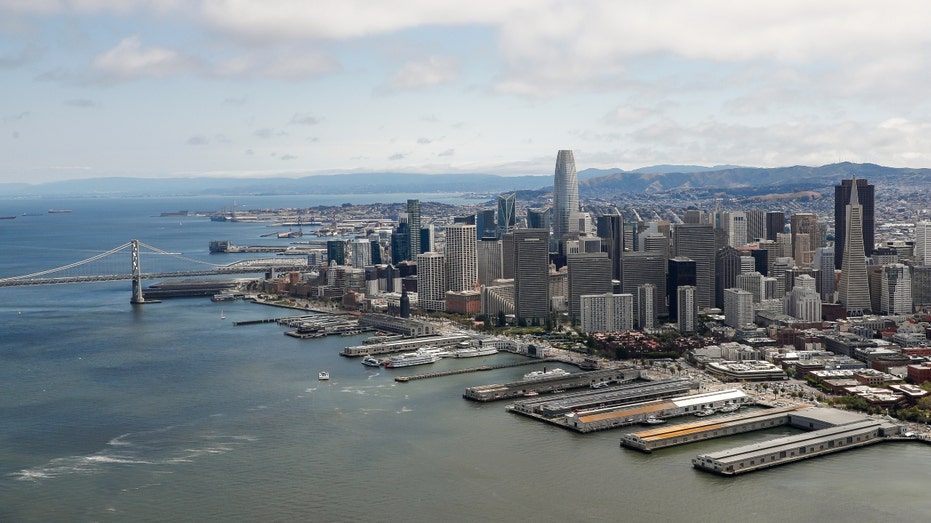
Offices around America hit a new vacancy record
[ad_1]
Cushman and Wakefields Bruce Mosler explains why he is optimistic about 2024 on The Claman Countdown.
America’s offices are emptier than at any point in at least four decades, reflecting years of overbuilding and shifting work habits that were accelerated by the pandemic.
A staggering 19.6% of office space in major U.S. cities wasn’t leased as of the fourth quarter, according to Moody’s Analytics, up from 18.8% a year earlier. That is slightly above the previous records of 19.3% set in 1986 and 1991 and the highest number since at least 1979, which is as far back as Moody’s data go.
The new record shows how remote work has upended the office market. But that is only part of the story. Much of the market’s current malaise traces its roots to the office-market downturn of the ’80s and ’90s.
That surge in office vacancies in the 1980s and early 1990s followed years of overbuilding. Easy lending fueled a construction boom, particularly in the South where land was cheap and red tape sparse. Banks often financed speculative office projects that didn’t have any tenants signed up.
MORE AMERICANS MOVED TO THIS STATE THAN ANY OTHER IN 2023
Office space vacancies are at an all-time high in major U.S. cities. ((Photo by ANGELA WEISS/AFP via Getty Images) / Getty Images)
“The building I built was almost a million square feet—100% empty,” said developer Bruce Eichner, who built the Manhattan office tower 1540 Broadway in the 1980s.
The result was a glut of office buildings that couldn’t find tenants when the economy went into recession in 1990 as the country suffered from the savings-and-loan crisis, when many S&Ls failed.
That glut weighs on the office market to this day and helps explain why vacancies are far higher in the U.S. than in Europe or Asia. Many office parks built in the 1980s and earlier struggle to find tenants as companies cut back on space or leave for more modern buildings.
4 WAYS LANDLORDS CAN NAVIGATE THE COMMERCIAL REAL ESTATE CRISIS

Austin, Texas, was one of several cities in the Lone Star state that ranked among the highest in the nation for office space vacancies. (Brandon Bell/Getty Images / Getty Images)
“The bulk of the vacant space are buildings that were built in the 1950s, ’60s, ’70s and ’80s,” said Mary Ann Tighe, chief executive of the New York tri-state region at real-estate brokerage CBRE.
And just as in the early ’90s, it is the overbuilt South that is hit hardest. Today, the three major U.S. cities with the country’s highest office-vacancy rates are Houston, Dallas and Austin, Texas, according to Moody’s. In 1991, Palm Beach and Fort Lauderdale in Florida and San Antonio held those positions.
REAL ESTATE INVESTOR WARNS US IS ENTERING THE ‘GREATEST’ CORRECTION OF HIS LIFETIME

The tech sector’s embrace of remote work has left San Francisco facing one of the highest vacancy rates for office space in the country. ((Photo by Brandon Sloter/Getty Images) / Getty Images)
Companies, eager to cut costs, also began ditching spacious private offices for open floors and cubicles, meaning they needed less space per employee.
“You had a shift away from the ‘Mad Men,’ Don Draper era of some of these large, large offices,” said Thomas LaSalvia, head of commercial real-estate economics at Moody’s Analytics.
That helped push up vacancies and started a gradual shift toward smaller offices that continues to this day. The Covid-19 pandemic merely sped up the shift as companies realized they needed even less space per employee because of remote work.
GET FOX BUSINESS ON THE GO BY CLICKING HERE
For all the similarities, there are also important differences between the two downturns. The crisis of the early 1990s ended abruptly after the economy started booming again. Vacancies plummeted, and companies gobbled up space. This time, most analysts expect offices to stay emptier for longer because vacancies have less to do with economic cycles and more to do with the growing popularity of working from home.
Meanwhile, winners and losers have switched places. In 1991, San Francisco had the country’s third-lowest office-vacancy rate, according to Moody’s. Today, the city has some of the country’s emptiest offices, partly because its large tech sector has enthusiastically embraced remote work.
[ad_2]
Source link




